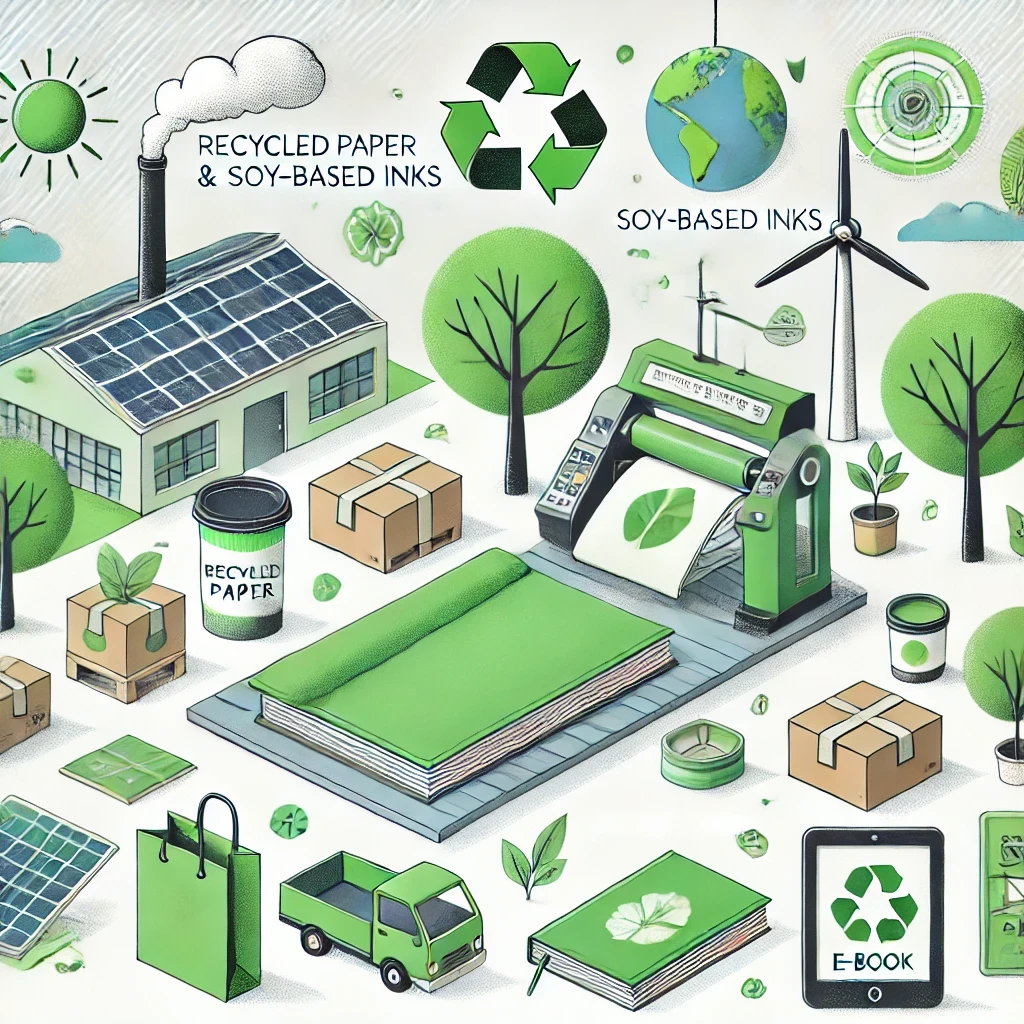As environmental concerns continue to grow, the publishing industry is increasingly adopting eco-friendly practices to reduce its impact on the planet. Green publishing involves using sustainable methods and materials throughout the book production process, from printing to distribution. Here’s an overview of eco-friendly practices in book production and how they contribute to a more sustainable future.
1. Sustainable Paper and Materials
Recycled Paper: Using recycled paper is one of the most effective ways to reduce the environmental footprint of book production. Recycled paper consumes fewer resources and generates less pollution compared to virgin paper.
Certified Paper: Many publishers opt for paper certified by organizations like the Forest Stewardship Council (FSC) or the Programme for the Endorsement of Forest Certification (PEFC). These certifications ensure that the paper comes from responsibly managed forests that meet strict environmental and social standards.
Alternative Fibers: Some publishers explore paper made from alternative fibers, such as bamboo, hemp, or agricultural residues. These materials can be more sustainable than traditional wood-based paper.
2. Eco-Friendly Printing Techniques
Soy-Based and Vegetable Inks: Traditional petroleum-based inks can release volatile organic compounds (VOCs) into the environment. Eco-friendly inks, such as soy-based or vegetable-based inks, are less toxic and more biodegradable.
Waterless Printing: Waterless printing eliminates the need for water in the printing process, reducing water consumption and preventing water pollution. This technique also produces sharper images and reduces paper waste.
Digital Printing: Digital printing is more environmentally friendly than traditional offset printing, particularly for small print runs. It reduces waste by allowing for print-on-demand services, which produce books only when they are ordered, minimizing overproduction.
3. Energy Efficiency and Waste Reduction
Energy-Efficient Facilities: Many publishers are investing in energy-efficient buildings and production facilities. This includes using renewable energy sources, such as solar or wind power, and implementing energy-saving practices.
Waste Reduction Programs: Publishers are adopting waste reduction programs to minimize waste generated during the production process. This includes recycling paper and other materials, reducing packaging, and reusing production scraps.
Carbon Offset Programs: Some publishers participate in carbon offset programs to compensate for the carbon emissions generated by their production processes. These programs invest in projects that reduce or capture carbon emissions, such as reforestation or renewable energy projects.
4. Eco-Friendly Packaging and Distribution
Minimalist Packaging: Reducing packaging materials and opting for minimalist packaging helps decrease waste and resource consumption. Publishers are also using recyclable and biodegradable packaging materials.
Sustainable Shipping: Eco-friendly distribution practices include using fuel-efficient transportation methods and consolidating shipments to reduce the carbon footprint of transporting books.
Local Printing: Printing books closer to the point of sale reduces the environmental impact of long-distance shipping. This practice also supports local economies and reduces transportation emissions.
5. Digital and E-Books
Digital Publishing: E-books and digital publishing reduce the need for physical materials and shipping, making them a more sustainable option. While digital devices have their own environmental impacts, the overall carbon footprint can be lower for e-books compared to printed books, especially for avid readers.
Eco-Friendly E-Readers: Manufacturers are increasingly producing eco-friendly e-readers using recycled materials and energy-efficient components. Choosing such devices can further reduce the environmental impact of digital reading.
6. Raising Awareness and Advocacy
Green Certifications: Publishers can seek green certifications, such as the Green Press Initiative, to demonstrate their commitment to sustainable practices. These certifications provide guidelines and standards for eco-friendly publishing.
Environmental Initiatives: Many publishers engage in environmental initiatives and partnerships to promote sustainability within the industry. This includes participating in tree-planting programs, supporting environmental NGOs, and advocating for sustainable practices.
Educational Campaigns: Publishers are also educating consumers about the importance of sustainable reading practices. This includes promoting the benefits of e-books, encouraging the recycling of old books, and raising awareness about the environmental impact of book production.

Conclusion
Green publishing is an essential step toward reducing the environmental impact of the book production industry. By adopting sustainable practices such as using recycled and certified paper, eco-friendly printing techniques, energy-efficient facilities, and responsible packaging and distribution methods, publishers can significantly reduce their carbon footprint. Additionally, the rise of digital publishing offers an alternative that can further support environmental sustainability. As publishers, authors, and readers increasingly prioritize eco-friendly practices, the future of book production looks greener and more sustainable.
